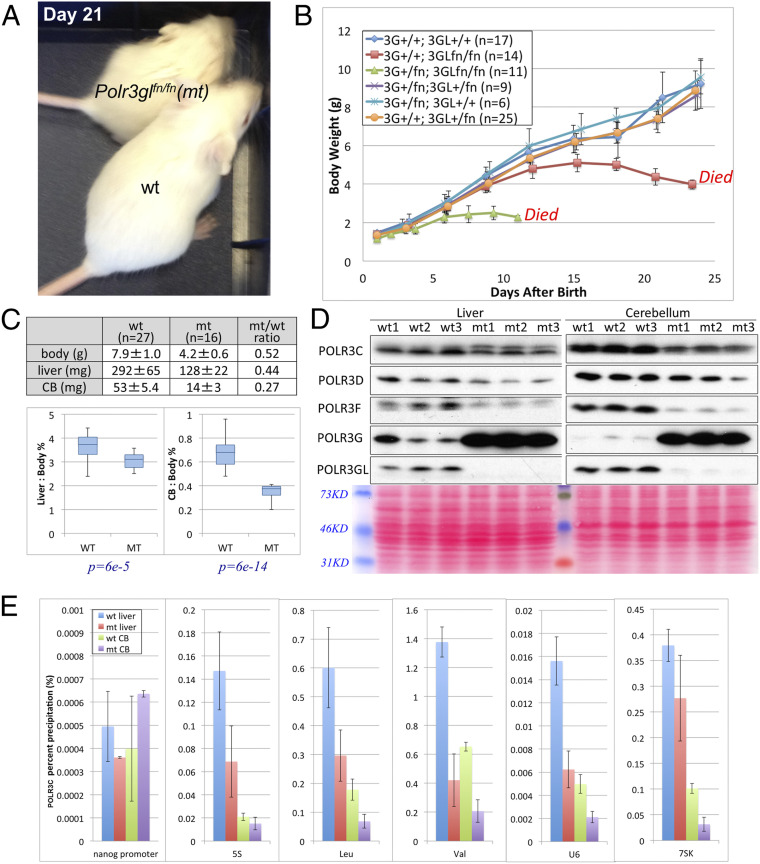Fig. 4.
Complete loss of POLR3GL in mice results in pup death at the weaning stage. (A) A Polr3glfn/fn mouse with about half the body size of its wild-type sibling at P21 after birth. (B) Growth curves of mouse pups with different dosages of Polr3g and Polr3gl genes from P1 to P25. Each mouse was weighed every 2 or 3 d in the morning. Genotypes and numbers of mice used for each genotype are described in the legend. Polr3glfn/fn mice are indicated by the red line and Polr3g+/fn;Polr3glfn/fn mice by the green line. (C) Graph indicating that Polr3glfn/fn mice show a statistically smaller cerebellum, relative to body size, than do control mice. (D) Immunoblots of liver and cerebellum protein extracts using POLR3C, POLR3D, POLR3F, POLR3G, and POLR3GL antibodies. Organs from three wild-type and three Polr3glfn/fn mice were used, and each lane was loaded with the same amount of protein extract as indicated by Ponceau S staining at the bottom. (E) POLR3C ChIP-qPCR assays were performed at several Pol III-targeted loci using liver and cerebellum tissues from wild-type and Polr3glfn/fn mice at P21.

